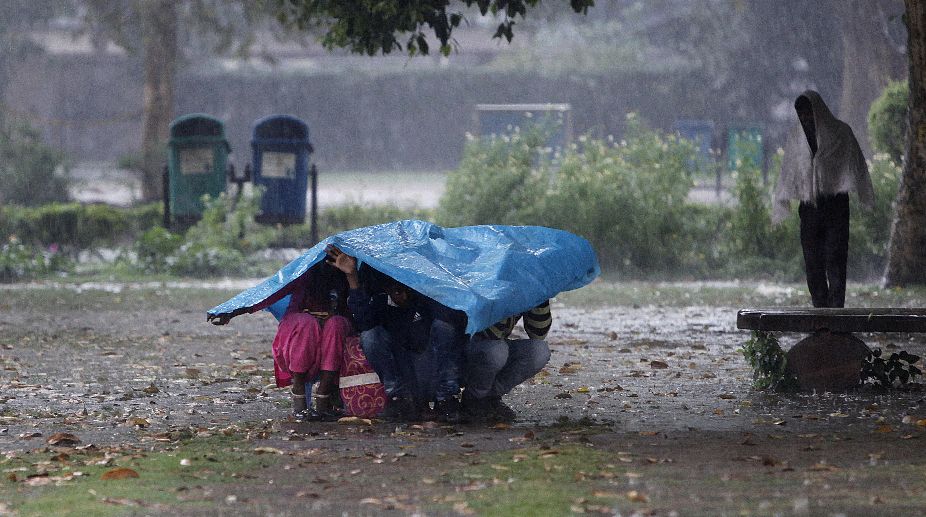WhatsApp working on new features to enhance user experience
Meta-owned WhatsApp is reportedly working on several new features to enhance the user experience on the chatting platform.

Photo:Shahnawaz Khan/SNS
It’s 9 p.m. and a biting chill has set in as dozens of migrant labourers start gathering near the Yamuna embankment in north Delhi’s Kashmere Gate area. Welcome to one of the national capital’s open-to-the-sky shelters — just one km away from Chief Minister Arvind Kejriwal’s residence in the Civil Lines area — for homeless workers who have not been able to find a place in one of the Delhi government’s many night shelters.
“I will spend the night here,” Omprakash, a daily labourer, told IANS as he prepared to lay discarded newspapers on the Yamuna riverbed and tried to cover his face with a shawl to beat the chill.
Advertisement
“We are not allowed in the night shelters as we are not regulars,” he said, taking out two slices of bread from his bag — his dinner.
Advertisement
Omprakash, who hails from Bareilly in Uttar Pradesh, is also ill. He says he suffers from a breathing problem and has a wound in his right thigh.
More people trickle in, armed with blankets and shawls, ready to spend the night under the open sky — because they don’t have a choice.
The Yamuna riverbed where the migrants have chosen to be is choc-a-bloc with animal waste, with its attendant foul smell to which is added that of the putrid river water.
“In the shelters, there is very little space to sleep,” Raju, a migrant from Katihar in Bihar, complained. “And with very less space to sleep in, it becomes impossible for us to relax after working for the whole day,” he said.
He also complained of thefts in the night shelters.
“We earn a very small amount, we cannot afford to lose our earnings and valuables by spending a night in the shelters,” he rued.
His grouse was echoed by Lalan Mandal, who hails from Darbhanga in Bihar. “We want to go to the night shelters, but after earning, when we go… then our money is stolen from there,” Mandal said.
Mandal has two children and his work as a plumber earns him around Rs 12,000-Rs 13,000 per month.
“We too have our children and our family, and we are living with our problems so that they don’t face trouble in future,” he said.
Alam Khan, who had occupied a spot near Mandal, said, “I work as a hand-rickshaw pusher and after working for a whole day when I return, I am abused there (in the night shelters).
“So we don’t prefer to go there and sleep here in the open,” said Khan, who also hails from Katihar.
He also complained that the staff at the night shelters most of the time allow in only their own favourites and don’t care for the others.
However, he is not alone as over 150 people have by now gathered at the spot, eager to grab the few clean areas left.
This IANS correspondent also visited six nearby night shelters, which were found to be over-crowded.
The Delhi government’s Delhi Urban Shelter Improvement Board (DUSIB), while announcing its Winter Action Plan on December 15, 2017, said it runs 251 shelters — 83 of them housed in permanent buildings and 113 operating out of porta-cabins. FIfty-five temporary shelters in tents have also been put up for the winter season.
Although the Board claims that the night shelters can accommodate close to 20,000 people, only about 10,000 homeless people are using them. The Delhi government has also announced that it will serve breakfast of “tea and rusk” till the end of January to those occupying the night shelters.
The DUSIB said that to bring the homeless to the night shelters, 20 rescue teams have also been pressed into service and will be doing the rounds every night. They can be contacted by citizens who want to report on the homeless by dialling a 24X7 control room number (011-23378789/8527898295/96) and a “Rain Basera” mobile application.
But despite the government’s efforts, thousands of people are still forced to live on the streets of the city. According to a 2014 DUSIB survey, the number of homeless in Delhi is 16,000, while various NGOs estimate that the number may run up to 100,000 or more.
Sunil Kumar Aledia, Executive Director of the NGO Centre for Holistic Development, said: “As per the guidelines of the National Urban Livelihood Mission, at least 50 sq ft of space should be given to every person in the night shelters.
“But Delhi shelters lack space and people get only 10-12 sq ft area,” he said, adding that most of the people avoid going to the night shelters due to over-crowding.
Aledia also said that this year, between December 1 and 14, at least 108 homeless people have died.
“In December 2016, 2015 and 2014, the death toll of the homeless was 235, 251 and 279, respectively,” he added.
Advertisement
Meta-owned WhatsApp is reportedly working on several new features to enhance the user experience on the chatting platform.
Microsoft has started rolling out an update to the Photos app in Windows 11 which includes a broad set of new features, improvements, and fixes based on feedback.
Meta has introduced a new WhatsApp app for Windows that loads faster and features an interface similar to the mobile version of the app.
Advertisement
